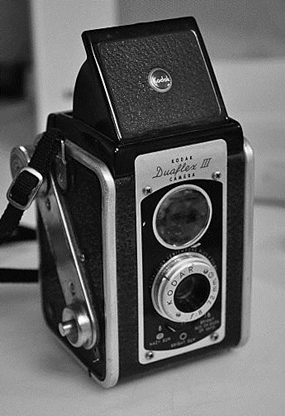When I began professional photography, I was a dyed-in-the-wool film buff, using 6×6 cm negatives and transparencies and 5×4 inch transparencies when I needed a larger format. Along with the best optical lenses available, I was always assured of pin-sharp images. There was nothing to beat it.
Then along came “digital” photography and the photographic world was split in two. The film and digital groups. One claiming “sharpness” and the other touting “instant” imaging.
I used to say that I would never go digital, because digital photographs were not as sharp as film photographs. All that changed in the past few years, and I took up digital photography.

I had done the conversion rather slowly, initially scanning my photos and storing the electronic form of the photo image in the computer, to be manipulated further if needed. This rather long-winded procedure meant that I was converting a negative into a positive print, then scanning into a digital image. Two steps, each capable of losing definition. Which it did.
I then began having my negatives turned into CDs, rather than printing the images and scanning them. This way I could import the images in digital form directly into my computer via ACDSee and then do the final crop, fix lop-sided horizons, etc., through Adobe Photoshop.
Undoubtedly there will be those folk who are very computer savvy who would say I should have used this or that software, but I am not a computer geek, I am purely a photographer who uses a computer. My editors need images at 300 dpi (stands for dots per inch, they tell me) and that is what I supply.
Of course, by still using my film cameras to capture the images, I was left in the situation whereby I did not know definitely that I had a usable image until the film was developed. I was also at the mercy of the boy who changed the photochemicals in the autoprocessor. Crispness in the final image could easily be compromised at that stage.
So I finally entered the digital era, choosing a camera with electronics from an electronics manufacturer and the lens from a lens manufacturer. This has, I believe, given me the best of both worlds. If you are going the electro-trickery route, use a manufacturer who knows and understands all the subtleties of LCDs and pixels and all of that stuff which I don’t really want to know, but why then get that manufacturer to make optical glass lenses? Surely a recognized lens manufacturer would be better?
Some of the examples of supposed digital superiority include:
Images are free. After you buy a digital camera, accessories and batteries, the pictures are free. The cost of digital looks high until you figure savings on film and processing.
Instant feedback. The LCD screen on a digital camera lets you check photos instantly. The ability to learn quickly from mistakes is a big advantage.
Exact duplicates of originals are possible. You can store exact copies of original digital images in multiple locations for safekeeping. With film you have only one set of original negatives, which you can store only at one location.
However, the editing process with digital is slow by comparison to looking at proof sheets, it becomes difficult to discard a ‘mediocre’ shot when you have invested so much time working on it just to view its potential. Many photographers end up keeping digital images that they would have thrown out had they been slides.
Shooting digital can mean much more time in front of the computer both in the field and at home. With film, you spend less time in front of the computer and more time shooting and the results tend to be stronger and more cohesive.
Just the physical aspect of shooting images is also different, and for me, film cameras are easier to use in the field. Digital still needs much fiddling around in its menu system. Granted, the five drop-down menus seems to cover everything a photographer might want, but I still find it fiddly, pushing buttons to go from one menu screen to another.
Both film and digital have their advantages, but the war isn’t over yet!




